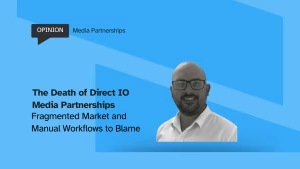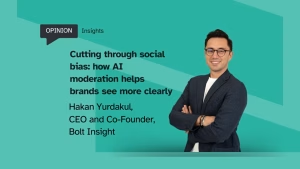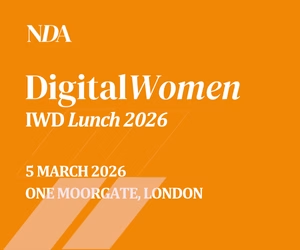By Harry Williams, Senior Marketing Manager at A Million Ads
Deciding where to invest budget is a perennial issue for advertisers. In recent years, the task has become even more difficult, with economic, technological and regulatory sands all shifting under marketers’ feet.
For example, the range of media channels being regularly accessed by the average consumer has increased considerably over the past few years, with channels such as Connected TV, Video on Demand, and digital video all capturing a bigger slice of consumer attention today than pre-pandemic.
However, many people would be surprised to know the fastest growing form of advertising is also one of the oldest: audio advertising. This is thanks largely to the success of newer formats including digital radio and podcasting. As brands gear up for a potentially difficult winter, these innovations in audio advertising can be leveraged to create more effective ads across the entire customer journey.
The age of audio
In an age of media saturation, digital audio offers advertisers some unique benefits. In contrast to other digital formats, it is fraud-free, it doesn’t compete with multiple tracks at once and digital audio ads are generally sandwiched in between content that regular listeners are enjoying.
According to Statista’s Advertising & Media Outlook, traditional radio currently still outpaces digital audio in audience, however, investment in digital audio is growing at a much faster rate than traditional radio. Digital audio spending is projected to reach nearly $8 billion by 2025, which will account for more than 40% of all audio ad buys.
Having been convinced of the merits of digital audio, the next decision for marketers is whether to focus their ad budget on digital radio or, instead, leverage the surge in popularity of podcasts. Let’s examine the case for both.
Digital radio vs. podcasts
In reality, marketers shouldn’t consider digital radio and podcasts to be competing formats: both do completely different things at different ends of the funnel.
Generally speaking, podcasts attract small, very niche audiences, where listener attention is high and there’s a strong possibility of a behavioural response to an ad. As with all digital media, marketers need to figure out the value of a podcast’s audience versus its reach and find the right balance for their campaign objectives.
Podcasts now attract an estimated 19.1 million listeners in the UK alone. This rise in popularity has even seen Twitter recently announce it was integrating the podcast format into its platform.
Additionally, podcasts attract loyal listeners who are highly targetable, with the BBC reporting a 16% increase in engagement compared to other media. However, these audiences are often smaller in number than radio, with only 76.4 million people listening (compared to 234.7 million). An incredible 89% of the UK population listen to radio every week for an average of 20.2 hours. Unfortunately, these listeners are often less engaged, with studies reporting engagement to be 5% lower than podcast content.
Radio is, however, an ideal format for creating memory structures with its audiences through repetition, offering a light-touch introduction to your brand messaging.
As mentioned, podcasts tend to draw in niche audiences—but these niche audiences tend to binge archive content and be extremely strong evangelists for their favourite podcasts. In addition, many leading podcast platforms make it possible to target by listener profiles—not just the main show that you’re buying for, but other shows that share the same audience demographics and interests.
The right time, the right voice
Live-read advertising, with highly contextual ad copy, lets advertisers reach an audience with memorable ‘sticky’ content that wouldn’t be possible with a more traditional ad.
While live-read ads have a long history in radio, more recently, the rise of dynamic audio content also adds a live factor to podcasts. Dialogue-based voice ads, enabled by AI, can turn listening into an active experience. Combined with high contextuality, the back-and-forth of a dialogue ad can also create ads that stick in the mind of the listener.
More traditional podcast advertising may require a longer-term view. With podcast binge-listening common, podcast advertising is better served by evergreen messages that work just as well six months later as on the day of release.
Whether on radio or podcast, advertisers would be wise to consider who is delivering their message. The reason that live-read advertising on radio is so successful is often down to the host. Radio listeners are loyal and develop a connection with the voices that keep them company each day. Podcast hosts also build a strong connection with their fan bases, and have leeway to add colour to their ads, for example, by mentioning how they themselves use the product.
In the mix
In the end, the question of whether to invest in traditional radio or podcasts should not be considered an ‘either/or’ proposition. For example, a brand could leverage traditional radio to create brand awareness and initial interest, then use an endorsement from a popular podcast host to convert that interest into action.
A major bank we work with recently ran campaigns across radio and podcasts where they changed the messaging depending on the medium. For podcast ads, they used dynamic host-read ads to promote the work they were doing with the charity Shelter – leveraging the more intimate and trusted nature of podcasts to convey a more poignant and emotional message. On radio, however, they ran different ads that focused more on business banking, rather than their charity work – taking a more business-like, less emotional approach with their messaging, better reflecting the nature of radio listeners’ engagement.
In 2022, a robust digital audio plan involves understanding your audience and embracing a mix of platforms and formats to reach them. If your brand isn’t currently investing in digital audio advertising, it’s time to tune in.










